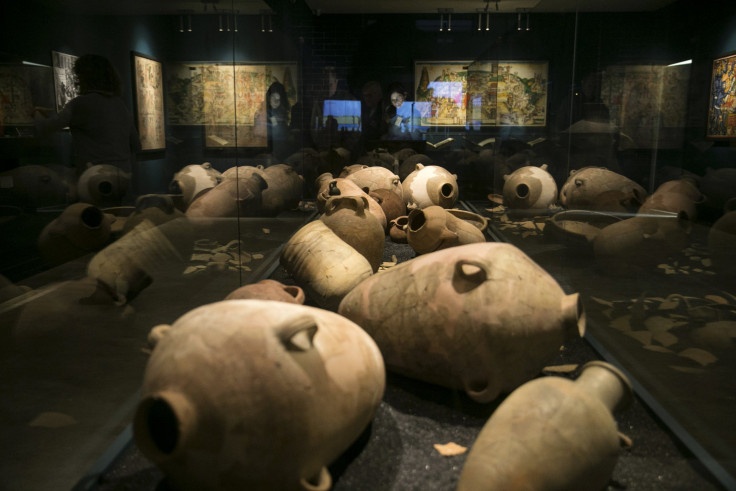Mystery Biblical King's 3000-Year-Old Sculpted Head Unearthed

A sculpted head of a king from nearly 3,000 years ago was found in Israel, raising questions among scholars as to whose face it depicts. The figurine was unearthed at a site called Abel Beth Maacah, located just south of Israel’s border with Lebanon.
This 2-inch rare example of figurative art is from the Holy Land during the 9th century B.C., the Associated Press reported, adding that nothing like it has been found before.
Scholars say the stern bearded figure with a golden crown represents royalty. But it is yet to be known which king it symbolizes.
The site, which was home to a village called Abil al-Qamh, was situated between three regional powers: the Aramean kingdom based in Damascus to the east, the Phoenician city of Tyre to the west, and the Israelite kingdom, with its capital in Samaria to the south.
About the faience head found last summer in Abel Beth Macaah. There are a few inaccuracies in this article. The figurine is not sculpted, and though the building was destroyed in the 9th-century, this is not necessarily the date of the figurine itself, https://t.co/sATLLmFnVy
— Ticia Verveer (@ticiaverveer) June 9, 2018
“This location is very important because it suggests that the site may have shifted hands between these polities, more likely between Aram-Damascus and Israel,” said Hebrew University archaeologist Naama Yahalom-Mack.
Archaeologists and curators at the Israel Museum in Jerusalem decided to put the piece on public display. A detailed report is set for publication in the June edition of the journal Near Eastern Archaeology.
“In the Iron Age, if there’s any figurative art, and there largely isn’t, it’s of very low quality. And this is of exquisite quality," Eran Arie, the Israel Museum’s curator of Iron Age and Persian archaeology, said.
Describing the royal figurine, Yahalom-Mack said: "The color of the face is greenish because of this copper tint that we have in the silicate paste." She pointed that a crucial clue for identifying its origin was its “very interesting hairdo."
“The guy kind of represents the generic way Semitic people are described,” she said.
© Copyright IBTimes 2024. All rights reserved.











